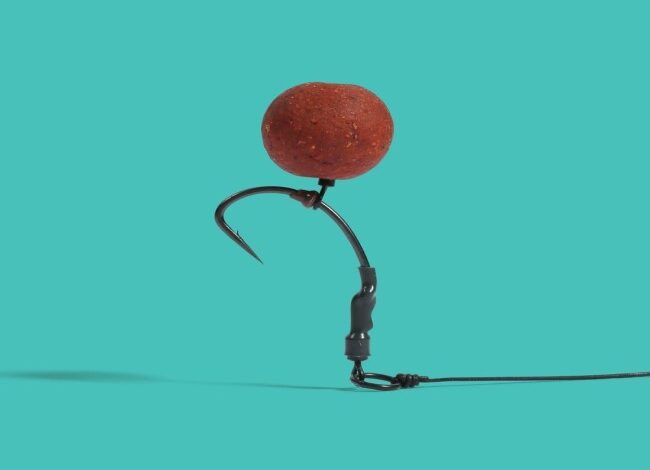Ronnie Rig: The Ultimate Guide to Modern Carp Fishing

Carp fishing has evolved over the years with countless rigs being invented, tested, and perfected by expert anglers. Among the most successful and widely used is the Ronnie rig. Also known as the spinner rig, this setup has gained a reputation as one of the most reliable and versatile rigs in modern carp fishing. Its effectiveness lies in its unique mechanics, simplicity, and ability to adapt to various fishing conditions.
Whether you are new to carp angling or an experienced fisherman, learning the proper Ronnie rig set up can significantly improve your catch rate. This article explores its origins, construction, advantages, and tips for maximizing success.
What Is the Ronnie Rig?
The Ronnie rig is a specialized carp fishing setup designed to offer the ultimate presentation of hook baits such as pop-ups and wafters. The main feature of this rig is the way the hook is mounted on a spinner swivel, allowing it to rotate freely in 360 degrees. This ensures that when a carp picks up the bait, the hook turns aggressively and penetrates quickly, reducing the chances of the fish ejecting it.
This rig is particularly popular among anglers targeting large carp in challenging waters because it provides excellent hooking efficiency and reduces the risk of tangling.
The History of Ronnie Rigs
The Ronnie rig emerged as a modification of traditional pop-up rigs. Anglers sought a setup that combined the low visibility of stiff booms with the aggressive hooking properties of swivels. Over time, its effectiveness became clear, and it quickly spread through the carp fishing community. Today, the Ronnie rig is regarded as one of the best modern rigs for targeting big carp across Europe and beyond.
Ronnie Rig Fishing: Why It Works
360-Degree Rotation
The hook’s ability to spin freely around the swivel gives it a mechanical advantage. Once the carp sucks in the bait, the hook automatically finds the best angle for penetration.
Self-Resetting Ability
One of the most powerful aspects of the Ronnie rig is its ability to reset itself. If a carp inspects the bait and manages to spit it out without getting hooked, the rig usually falls back into position, ready for the next bite.
Versatility Across Bottom Types
Whether you are fishing over gravel, silt, or light weed, the Ronnie rig performs consistently well. Its presentation keeps the bait slightly elevated, which makes it attractive and visible to feeding carp.
Components of a Ronnie Rig Set Up
To build a proper Ronnie rig, you need the following essential components:
Hook
-
Wide-gape or curved-shank hooks are commonly used.
-
Strong, sharp hooks ensure better penetration.
Spinner Swivel
-
A crucial element that gives the rig its 360-degree rotation.
-
It connects directly to the hook.
Boom Section
-
Usually made from fluorocarbon or stiff coated braid.
-
Provides anti-tangle properties and ensures clean bait presentation.
Kicker or Shrink Tubing
-
Secures the swivel to the hook and aligns everything neatly.
-
Improves hooking efficiency.
Hook Bead and Bait Attachment
-
A micro ring swivel or bait screw is used to mount the pop-up or wafter securely.
How to Tie a Ronnie Rig
Step 1: Prepare the Boom
Cut a length of boom material around 6–9 inches depending on the bottom type you are fishing over.
Step 2: Attach the Swivel
Fix a spinner swivel to one end of the boom using a crimp or knot.
Step 3: Add the Hook
Thread the hook onto the swivel and secure it with shrink tubing or a kicker.
Step 4: Mount the Bait
Attach your chosen pop-up or wafter to the micro ring swivel or bait screw on the hook.
Step 5: Finish the Rig
Add an anti-tangle sleeve to the other end of the boom and connect it to your lead system.
Ronnie Rig Fishing Tips
Choosing the Right Bait
-
Pop-Ups: Best for visibility and buoyancy, ideal for weedy or silty areas.
-
Wafters: Offer a more subtle presentation that closely mimics natural food.
Ideal Situations to Use
-
Works especially well in pressured waters where carp are wary of traditional rigs.
-
Perfect for fishing over a spread of boilies or particle baits.
Hook Size and Strength
Always match the hook size to your bait. For example, a 15mm pop-up pairs well with a size 4 or 6 hook.
Advantages of Using Ronnie Rigs
Superior Hooking Efficiency
The rotating swivel mechanism makes it extremely difficult for carp to eject the hook once taken.
Easy to Construct and Adapt
Unlike some complex rigs, the Ronnie rig is straightforward to tie, and components can be quickly swapped out.
Highly Effective in All Seasons
From warm summer waters to cold winter conditions, the rig continues to perform consistently.
Common Mistakes to Avoid
Using Weak Hooks
A poor-quality hook will reduce effectiveness and may result in lost fish.
Too Long or Too Short Boom
The boom length must be adjusted according to the lakebed. Too long may tangle; too short may look unnatural.
Incorrect Bait Balance
If the pop-up is too buoyant or the wafter too heavy, the rig won’t sit properly. Always test it in the margins before casting out.
Ronnie Rig vs Other Carp Rigs
Compared to other rigs like the chod rig or stiff hinge rig, the Ronnie rig stands out for its ease of use and versatility. While chod rigs are excellent in heavy weed and hinge rigs excel in deep silt, the Ronnie rig strikes a balance, working effectively in most conditions without needing complex adjustments.
Final Thoughts
The Ronnie rig has earned its place as one of the most effective carp fishing setups of all time. Its design, rooted in simplicity and efficiency, makes it a favorite among beginners and professionals alike. With its 360-degree rotation, self-resetting ability, and adaptability to different fishing environments, it offers unparalleled reliability on the bank.
Whether you are experimenting with Ronnie rig fishing, tying multiple Ronnie rigs for different situations, or perfecting your Ronnie rig set up, this rig will undoubtedly enhance your success. If you are serious about carp angling, mastering the Ronnie rig is a must.



